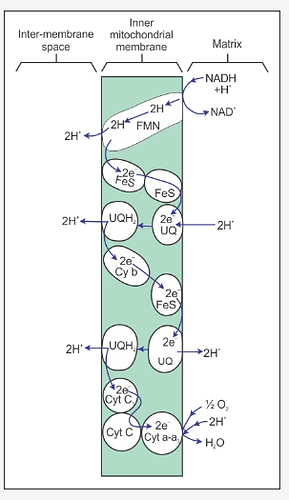Explain Electron Transport System (ETS).
(Please try to explain in detail as video facility in biology is not there).
Electron transport system is an integral part of the cellular respiration. Electrons are passed to oxygen through electron carriers which results in the formation of H2O. Electron carriers fall into three categories here.
(A) Electron Acceptors
NAD (Nicotinamide adenine dinucleotide) and FAD (Flavin adenine dinucleotide) both accept electrons and get reduced to NADH+H+ and FADH2.
This occurs during process glycolysis, oxidative decarboxylation of pyruvic acid and Krebs’ cycle.
B) Respiratory Coenzyme Complexes
Complex I - NADH dehydrogenase: It oxidises NADH+ H+ and receives electrons or H+ ions from NADH+H+. These electrons are then passed to the mobile electron carrier ubiquinone.
Complex II - Succinate dehydrogenase: It oxidises FADH2 and the release electrons are sent to the mobile electron carrier ubiquinone.
Complex III - Cytochrome b + cytochrome c1: Cytochrome bc1 complex accepts electrons from ubiquinone and passes them to the mobile electron carrier cytochrome c.
Complex IV - Cytochrome a, a3: Complex IV accepts electrons from cytochrome c and passes them to oxygen. Oxygen acts as a final hydrogen or electron acceptor. Oxygen when combines with two protons it forms a molecule of water.
C) Mobile Electron Carriers
Ubiquinone: It is a carrier between complex I and complex II. It transfers electrons from NADH to complex III.
Cytochrome c: It is a carrier between complex II and complex III. It transfers electrons to complex IV.
